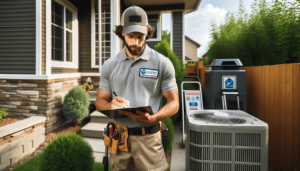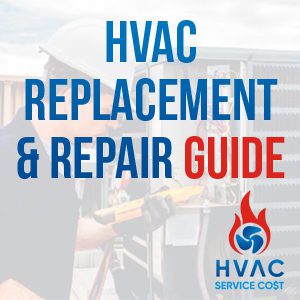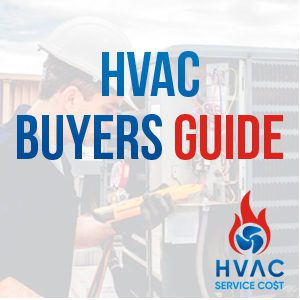
A Homeowner’s Guide to Understanding HVAC Terminology
Navigating the world of HVAC (Heating, Ventilation, and Air Conditioning) can often feel like decoding a complex language. Whether you’re dealing with a breakdown, considering a new installation, or just trying to maintain your current system, understanding some basic HVAC terminology can greatly enhance your ability to make informed decisions. This guide will walk you through the most common terms in the HVAC industry, explaining them in a conversational and easy-to-understand manner.
1. HVAC – Heating, Ventilation, and Air Conditioning
This is the umbrella term that encompasses the entire system responsible for moving heated or cooled air throughout your home, maintaining indoor air quality, and providing comfort. Knowing this term helps you understand that these systems do more than just heat and cool; they also play a crucial role in ventilating your indoor spaces.
2. Thermostat
The thermostat is your primary interface with your HVAC system. It allows you to control the temperature settings within your home. Thermostats can range from basic manual models to smart thermostats that can be controlled via smartphone apps. Understanding how your thermostat works can help you better manage energy usage and comfort levels in your home.
3. SEER – Seasonal Energy Efficiency Ratio
SEER ratings measure the cooling efficiency of your air conditioner or heat pump. The higher the SEER rating, the more efficiently the unit operates, which translates into lower electricity bills. Especially in hotter climates, having a high SEER rating can make a significant difference in cost and environmental impact.

4. AFUE – Annual Fuel Utilization Efficiency
This term is similar to SEER but applies to heating technologies like furnaces. AFUE is a percentage that reflects how efficiently a furnace can convert the energy in its fuel to heat over a typical year. For example, an AFUE of 90% means that 90% of the energy in the fuel becomes heat for the home, and the other 10% escapes up the chimney or elsewhere.
5. BTU – British Thermal Unit
BTU is a unit of heat; it is the amount of heat required to raise the temperature of one pound of water by one degree Fahrenheit. In HVAC terms, it’s used to measure the heating and cooling capacity of equipment. Knowing the BTU rating of your heater or air conditioner can help you choose a unit appropriately sized for your space.
6. Air Handler
The air handler is a device used to regulate and circulate air as part of the HVAC system. Typically located inside the home, it includes components like blowers, heating and cooling elements, filter racks, and dampers. Understanding this component is key to maintaining the efficiency and longevity of your system.
7. Compressor
A compressor is part of your air conditioning or heat pump system. It compresses the refrigerant that cools the air. The compressor is often considered the heart of the system, and its efficiency directly impacts your HVAC system’s effectiveness and durability.
8. Refrigerant
This chemical compound is essential for cooling your home. It absorbs heat from the indoors and releases it outside, effectively cooling the air inside your home. Knowing about refrigerant types is important because of environmental regulations that require certain refrigerants to be phased out and replaced with more eco-friendly alternatives.

9. Ductwork
This is the system of ducts through which heated or cooled air travels throughout your home. Good ductwork design is crucial for efficient airflow, and leaks or poorly insulated ducts can lead to significant energy losses.
10. Heat Pump
A heat pump is a mechanical-compression cycle refrigeration system that can be reversed to either heat or cool a controlled space. It’s an efficient method of heating and cooling, as it moves heat rather than generating heat, giving you more energy output for the electricity used.
11. VAV – Variable Air Volume
This is a type of heating, ventilating, and air-conditioning (HVAC) system that, unlike constant air volume (CAV) systems, which supply a constant airflow at a variable temperature, VAV systems vary the airflow at a constant temperature. The advantages of VAV systems include more precise temperature control, reduced compressor wear, lower energy consumption by system fans, less fan noise, and additional passive dehumidification.
Why Should You Know These Terms?
Understanding these terms not only helps you communicate more effectively with professionals when you need service or repairs, but it also empowers you to make better choices about the maintenance and upgrading of your HVAC system. Knowledge about what each component does and how they all work together can help you identify potential problems early, understand proposals and quotes, and manage your home energy efficiency effectively.
Whether you’re a new homeowner or simply looking to brush up on your home maintenance knowledge, keeping these terms in mind will help you keep your home comfortable and your HVAC system running smoothly.

Maintenance Tips for Each Major Component
Now that you’re familiar with the common terms associated with HVAC systems, it’s important to understand what you should do when you encounter problems with these components. Regular maintenance is key to keeping your HVAC system running efficiently and effectively. Here, we’ll go through some basic maintenance tips for each major component of your HVAC system. These tips will help you identify potential issues early and address them before they become larger problems, potentially saving you from costly HVAC repairs or replacements.
Thermostat
- Check and Replace Batteries: Regularly check the batteries in your thermostat. Weak batteries can lead to malfunctions or inaccurate temperature settings.
- Calibration Check: Ensure your thermostat is calibrated properly to avoid incorrect readings. Consult your manual on how to recalibrate or consider calling a professional if unsure.
- Cleanliness: Keep the thermostat clear of dust and debris as these can affect its functionality. A soft brush or cloth can be used to clean the thermostat gently.
Air Handler
- Filter Replacement: Change or clean the air filters every 30-90 days, depending on usage and type. A clean filter improves air flow and air quality, and enhances the efficiency of the air handler.
- Inspect Coils and Clean: The evaporator coils should be inspected annually and cleaned as needed to ensure they are not obstructed by dirt or debris, which can reduce efficiency.
- Check for Obstructions: Make sure that the air intake and output are not blocked by furniture or other items, as this can force the air handler to work harder and increase energy costs.

Compressor
- Regular Inspections: Have your compressor inspected by a professional annually to ensure it’s functioning correctly and efficiently.
- Clear the Area: Keep the area around your outdoor compressor unit free of leaves, dirt, and other debris. This helps maintain proper airflow and cooling efficiency.
- Check Refrigerant Levels: Low refrigerant levels can be a sign of a leak or other issue. Because handling refrigerant typically requires professional skills and equipment, this is something that should be checked by a qualified technician.
Ductwork
- Seal Leaks: Check your ductwork annually for leaks or holes. Use duct sealant or metal-backed tape to seal any leaks, which can improve efficiency and reduce energy costs.
- Insulate: Ensure that your ductwork is well-insulated, especially in unconditioned spaces like attics or crawl spaces. This prevents heat loss and gains through the ducts, improving comfort and reducing energy bills.
- Professional Cleaning: Consider having your ducts professionally cleaned every few years to remove dust, mold, and other buildups that can affect air quality and system efficiency.
Heat Pump
- Bi-annual Check-ups: Schedule professional check-ups for your heat pump before the cooling and heating seasons to ensure it’s operating efficiently.
- Clean or Change Filters Regularly: Similar to the air handler, maintaining clean filters in your heat pump is crucial for efficiency and longevity.
- Maintain Clearance Around the Unit: Keep at least two feet of space around your heat pump clear from any vegetation or debris to ensure adequate airflow and prevent obstructions.
By following these maintenance tips, you can help extend the life of your HVAC components, improve your system’s efficiency, and maintain a comfortable environment in your home. Regular maintenance not only saves you money on energy costs but can also prevent unexpected breakdowns and expensive repairs. Should your HVAC system require repairs, HVAC Service Cost is here to help by connecting you with reliable and local HVAC services.




Leave a Reply